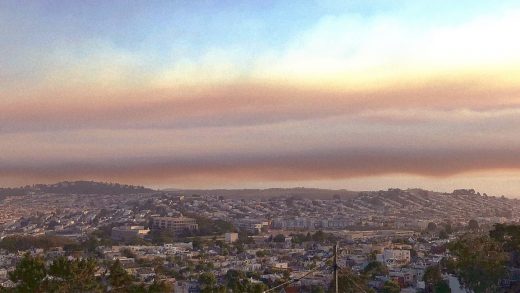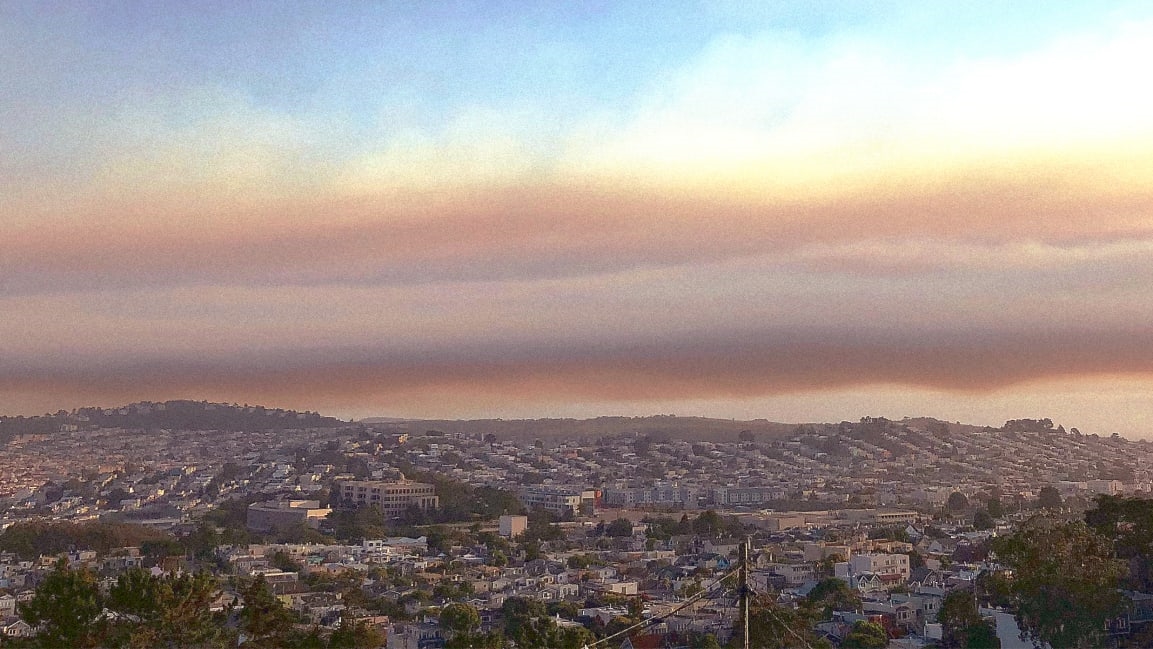California is on fire, and the smoke is visible from space
There are now 367 wildfires burning in California. In the Bay Area, where fires are burning in every direction from San Francisco, the air quality is currently among the worst in the world. There’s an eerie orange glow in my apartment in Oakland, and ash is falling outside. The smoke is so thick it’s visible from space.
Afternoon visible satellite image shows immense smoke blowing about from the wildfires. #cawx pic.twitter.com/5ceLkvWkfi
— NWS Bay Area (@NWSBayArea) August 18, 2020
In some parts of the state, people are fleeing for their lives as homes burn. Others, safe from the flames, are dealing with the smoke. One map of community air quality sensors in the area, called PurpleAir, shows some air quality index readings well over 300—well into the hazardous category—for PM 2.5 (particulate matter less than 2.5 micrometers in diameter), the tiny particles of soot in smoke that can cause health problems. The official government site for air quality, which uses more accurate data but only has sensors in a handful of locations that are slowly updated, lists an “unhealthy” reading of 165 for my neighborhood at the time of publication, warning people to spend less time outside. At the same time, the region is dealing with an unusual heat wave, and people are being told to close their windows even though few have air-conditioning.
Many of these fires were sparked by lightning, but the situation isn’t natural: Wildfires are increasing as climate change makes the West hotter and drier. (Insects that thrive in heat have also killed hundreds of millions of trees in forests, turning them into fuel.) The average size of fires is growing; before 1970, no “megafires,” or fires greater than 100,000 acres, had been documented. Now, they’ve become more common: In 2018, the Camp Fire burned 153,336 acres, and the Mendocino Complex Fire, a pair of wildfires, burned a combined 459,123 acres. By the middle of the century, the average size of fires in the West could double or even increase six-fold.
Some might suggest moving out of the West—although wildfires are also increasing in other parts of the U.S. and around the world, including places that might seem unlikely, such as Sweden. If you want to move to avoid the effects of climate change, from extreme heat to hurricanes, you might be out of luck. Things will get worse if global emissions aren’t curbed. We haven’t hit a “new normal” of the Western fire season or hurricanes; we’re just experiencing the first round of impacts. Emissions hit a record high in 2019. Still, it’s very much possible to avoid the worst impacts of climate change, experts say. And this is the time to do it, especially since decarbonizing the economy could help create millions of jobs needed to recover from the pandemic.
Fast Company , Read Full Story
(20)



